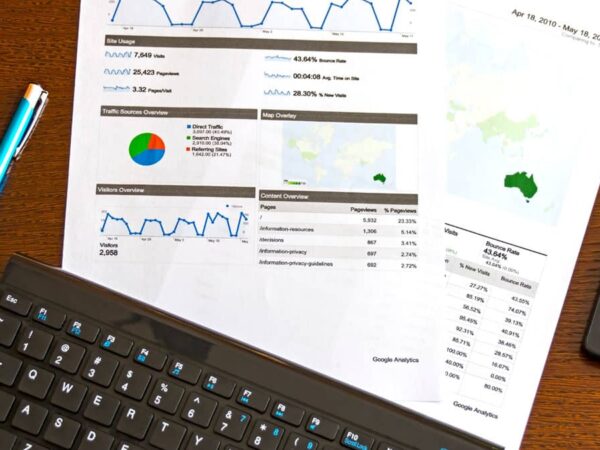Business Plans 101
Whether you’re in startup mode or your need financing to expand your business, writing a business plan is essential. Here’s how.

Whether you’re thinking about starting a business or looking for financing to expand one you’re already running, you’ll find writing a business plan beneficial, if not essential.
Many lenders won’t give you money unless they know you have a well-thought out strategy for where you’re going and how you’ll get there. Even if you’re approaching friends and family for money, people who won’t require you to have a plan, it will be helpful to write one. Simply by going through all the necessary steps to put one together, you’ll wind up with a clearer idea of what you’re trying to accomplish and many of the challenges you might face along the way. Certainly, if you’re going to try to get money from a bank, a government-backed lender, a venture capitalist, or a community development financial institution (CDFI), you will need a formal business plan.
This article is part of a series that will teach you how to write the perfect business plan – discussing why you should have one, the different types of business plans you can develop, and what goes into each section. Before we get into the how-to, let’s take a deeper look into what writing a plan will do for you.
The first clue comes right in the description of what a business plan is: a roadmap for your business that outlines your goals and spells out how you aim to achieve them. In other words, it’s a guide for how to set up your business and run it on a daily basis to help you reach your long term goals. And as we said, it’s a worthwhile investment of time and effort even if you don’t need to present it to potential investors.
Nine Benefits of Writing a Business Plan
1) Focus
Writing a business plan will help you gather all of your ideas in one place, hone your message and crystallize your vision. This will keep you from getting scattered, sidetracked, or pulled away from what’s likely to make you the most successful.
2) Research
The knowledge you’ll gain as you explore the industry you’re working in will be invaluable. You’ll get a much better understanding of the niche you hope to fill and where you fit into the market.
3) Commitment
Taking a look at expense projections, sales and revenue forecasts, and all the other dollars and cents aspects of your business will help keep you on track as you move forward, and serve as a built-in warning system if you’re not where you’re supposed to be.
4) Exploration
It’s easy to get so focused on the nuts and bolts of your business that you lose sight of the bigger picture. A business plan will help ground you, but also figure out where you fit within the greater whole, things you may not have taken the time to consider.
5) Objectivity
Talking to friends and family about your great idea can make it seem like a can’t-miss proposition. The supportive environment can make it difficult to anticipate real-world bumps and business realities. Doing the actual math while putting your plan together will help you see whether your idea is truly sustainable or needs some work. It’s vitally important to catch things early before you invest too much time or money.
6) Teamwork
Even solo businesses have team members, whether it’s a supportive spouse or a professional accountant or attorney. Larger companies may have someone to manage sales, another person for marketing, and one for operations. No matter how many people are on your team, it’s important to share the same goals and values as you work toward the future. A business plan will serve to get everyone on the same page as you move forward.
7) Accountability
Business plans have a fairly standardized set of components. Doing the work to put the plan together will make sure you think about all of the important facets you need to cover, and give you standards to hold yourself to as you start to put the plan into effect.
8) Measurement
Laying out your goals and ideas in advance gives you something to check in with along the way to see how you’re doing. Where are you exceeding your expectations? In which areas might you be falling short? While it’s important to see your business plan as flexible, it’s great to have something in writing that helps keep you honest with yourself about your performance.
9) Recruitment
When you’re looking to attract top talent, your business plan will help give potential employees an overview of what you’re all about, and their reaction to the plan will help you know if they’re a good fit. Do they grasp the key issues involved with your business? Fill a slot you need to move forward? Great employees will appreciate how you’ve taken the time to assess your place in the market — as will lenders and investors when you need to raise money.
What Are the Different Types of Business Plans?
Okay, you’re sold. You understand the benefits of having a business plan and you’re committed to writing one. What comes next? Decide on what type to create.
Just as your goals and business will not look exactly the same as someone else’s, your business plan will be unique to you. Some elements belong in each one, and we’ll explain each of those below, but your presentation might be completely different. Most importantly, think about who the audience is and what the goals are for the plan. Most business plans will take one of the following shapes:
Miniplan
As its name suggests, a miniplan isn’t a lengthy document. It can be as short as two to 10 pages, as long as it covers your concept for the business, how you’ll finance and market it, and financial information such as operating expenses, cash flow, income projections and a balance sheet. It’s a great way to lay out your concept or have basic information to show to potential partners or investors. Know your audience, though. A miniplan isn’t a substitute for a longer, full-length document. If it’s for your own personal use, this might suffice. An investor or lender may be looking for something more.
Internal Working Plan
If the primary purpose of your plan is to use it to run your business, it doesn’t have to be nearly as formal as a traditional, full-scale business plan. You’ll want it chock full of details about your finances and objectives, but you can leave out the parts that would mostly be necessary for outsiders, like resumes of key executives and photos of products or prototypes.
Your final presentation can also be a bit less fancy. No need to print it out on nice stock and put it in a beautiful binder. You don’t even have to print it at all, if it’s on your computer. What’s in the plan is far more important than what it looks like. Like the old, oft-folded road maps we kept in the glove compartment before the days of smartphone GPS apps, this is a document you’ll live with, something that will help guide you and keep you on the right path.
A Formal Presentation Plan
This is likely the kind document that originally came to mind when we started talking about business plans. This is the real deal, the one that’ll take the longest, probably be the longest, and will be suitable for showing to lenders, investors and anyone else you need to impress outside the company. When we detail the components below, plan to include all of them in your final document. And pay attention to presentation, spelling and grammar. As opposed to your own in-house plan, a formal presentation plan requires recognized business language and should avoid slang, jargon and shorthand only you will understand. It must be well-written and consistent, especially where numbers and finances are concerned.
Your presentation plan should be printed on high-quality paper, with color, especially if you’ve included product photographs. It should include charts, graphs, tables and illustrations, and be professionally bound.
E-Plan
While having a printed document is still recommended, and may even be required by a potential lender or investor, many business documents are transmitted electronically today, so it’s smart to have a version of your plan that looks great as an electronic document. This could be a simple PDF of what you’ve had printed or something more elaborate, with clickable spreadsheets to manipulate projections. As with each of the above plans, let your needs dictate what kind of document you create.
Elements of a Business Plan
A formal plan will include all of the following items, and less formal plans, like mini or working plans, will include many of them. We’ll touch on them briefly here, and expand on each throughout the series in its own separate article.
Click on each header to open the full article.
EXECUTIVE SUMMARY
An overview of what you want to accomplish. This is usually the first page of your plan after the title page. However, you might want to save writing it until last, as it sums up all you’ve presented.
BUSINESS DESCRIPTION
A description of your company and its industry, along with the current outlook and possibilities for the future.
ORGANIZATION AND MANAGEMENT
Explain how your company will be structured. What does the management team look like? How many employees will you need? Will you have other individuals in charge of certain functions, or run everything yourself? Which tasks will be assigned to each division? What are the expenses related to operating the business?
PRODUCTS AND SERVICES
What, exactly, are you selling or providing? This is where you fully explain your concept. Include a description, the suppliers you’ll use (if any), what your costs are, how you determined them, and how your product or service is different from what’s already available.
MARKET ANALYSIS AND STRATEGIES
A look at who your competitors are, how you are different, your strengths and weaknesses compared to the competition, what kind of market share you’re hoping for, and how you will position yourself to get there.
SALES AND MARKETING
Given what you know about the existing business conditions, how will you market your product or company? How will you sell? Will you have a sales force or use outside representatives? How will you build the company, handle expansion, and recruit and compensate your employees?
FUNDING REQUEST
If the main purpose of the plan is to help you raise money, whether from investors or through a loan, this is where you’ll spell out what you need. How much are you looking for right now? How might that change over the next five years? What do you plan to do with the money?
FINANCIAL PLAN
This section will be imperative if you’re looking for money, but it’s important no matter what. Spelling out your sales projections for the future will help you closely examine costs, decide how you’ll allocate your resources, and whether you actually have a viable idea.
APPENDIX
This is optional, but would be the place to include information like the resumes of your key management team, reference letters, product photos, copies of major contracts and other pertinent legal documents.
How to Best Use Your Business Plan
Most importantly, actually USE it, even if it’s not being submitted to a financial institution. You’ve done all the research, the thinking, the projecting, and the writing. Don’t just toss it all in a drawer and forget about it. Take it out on a regular basis, read it, and see how you’re doing.
Remember, it’s called a plan, and things don’t always go as planned, so if you see you’re veering off course, whether intentionally or inadvertently, now is the time to make whatever adjustments are necessary. A business plan is only a snapshot of where you were at the time you wrote it, and it needs regular attention and revising to stay relevant and valuable.
With all the work you did to put it together, you’re already a giant step ahead of most of your competitors. Keep it current to reflect what’s going on now, along with the knowledge about your market you’ve picked up along the way. If a sales strategy isn’t working, eliminate it and find another. When a particular marketing tool produces gangbuster results, allocate more resources that way. As the plan grows and changes with you, it will be an even better guide to your future strategy and success.
Now that you have the gist of a business plan, start working on it and revisit us over the next few weeks for a better understanding of the elements that go into it. There is more to come so stay-tuned!
Execute Your Business Plan with Financial Education
When it comes to your finances, you want clear guidance and easy-to-implement tools based on your unique needs. Visit Learn with AOF to get started strengthening your financial management and meeting your goals.
Experience a different kind of financial education. Learn with AOF has flexible, on-demand courses developed by small business owners, for small business owners. Learn on your schedule, with no time commitment or limit. Save your progress any time to fit courses into your busy schedule.








